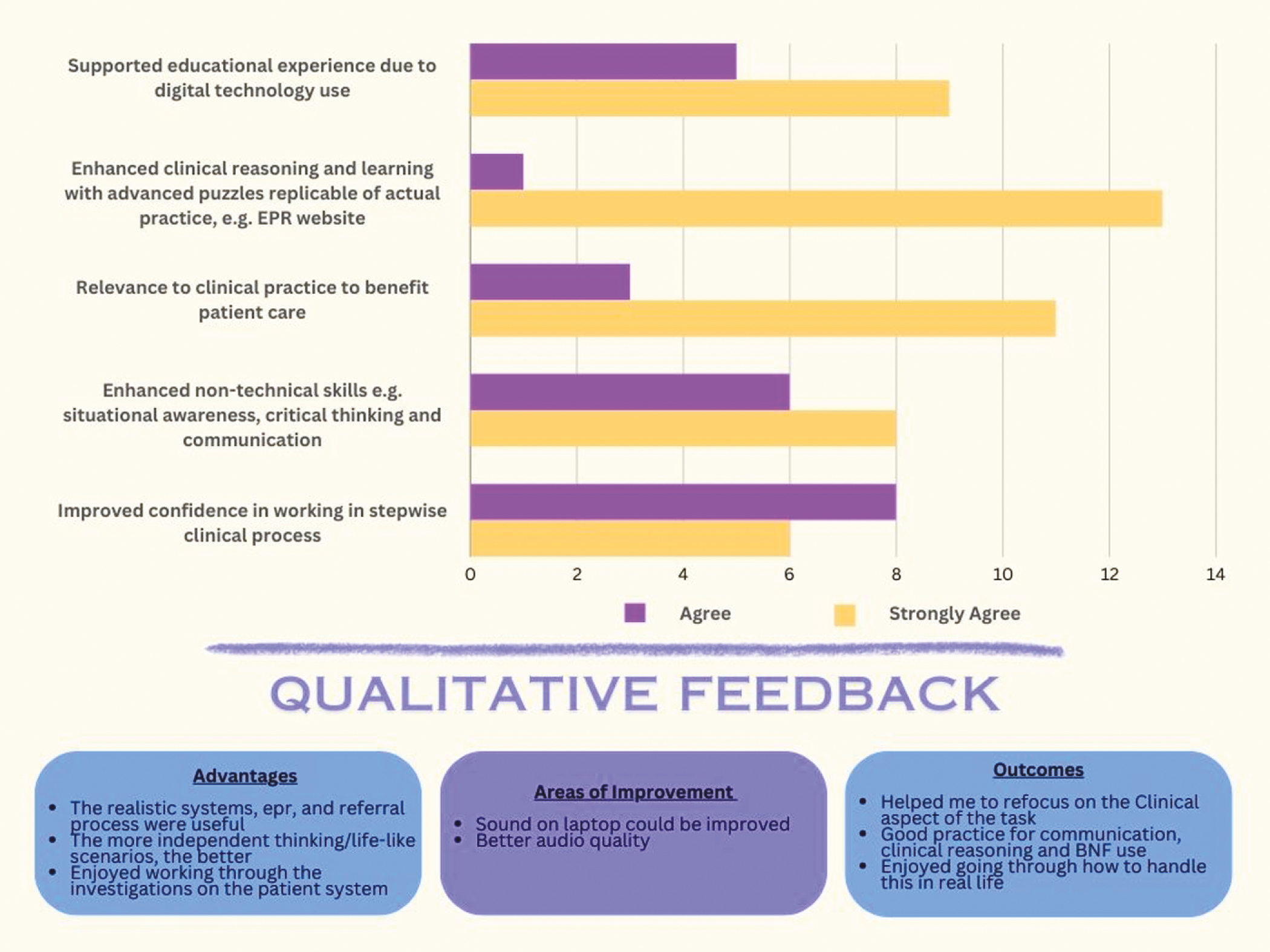
Although educational escape rooms have become increasingly popular in recent years, the availability of tools to support their implementation has not evolved alongside. It is thought that logistical effort and lack of user-friendly, reusable tools have prevented the widespread adoption of medical escape rooms [1]. The use of widely available technologies can offer more flexibility around puzzle creation and can create an environment that closely resembles that of a clinical area, adding to the learning of medical students.
This work aims to determine whether the introduction of new technology to a low-fidelity medical escape room scenario improved the experience and benefitted the learning of medical students.
A single-day medical escape room simulation was designed, which revolved around the management of a patient with acute coronary syndrome. A fictitious electronic patient record (EPR) system was specifically created for this scenario, containing a simple patient search function, fictitious patient information and image results with certain pages locked behind passwords.
Penultimate-year medical students, in teams of 3-4, were given 45 minutes to complete the scenario, after which a structured debrief occurred. Students were asked for feedback on their experience using free text responses and 5-point Likert scales. Students self-reported on their learning of medical concepts, non-technical skills related to simulation, and their experience of the puzzles during the scenario.
There was a 100% feedback completion rate from students who participated in the escape room (n=14). In the quantitative feedback (Figure 1-A134), all students responded strongly agree or agree that using supportive technology benefited their educational experience. 93% strongly agreed that the increasing complexity and realism of the puzzles, especially the fictitious EPR website, effectively enhanced their clinical reasoning and learning. Written feedback praised the usefulness of the fictitious EPR system and the realism of the clinical scenario.


Using digital technology in low-fidelity educational escape rooms can enhance the complexity of puzzles and orient learners towards their community of practice by simulating a clinical environment [2]. The fictitious EPR system allowed for flexible puzzle creation and familiarised learners with the use of clinical systems. All students were able to escape the room successfully, therefore creating a positive learning experience for the participants [3]. Feedback showed that the technology enhanced students’ clinical learning and skills. If designed to be reusable and user-friendly, digital technology could make simulated low-fidelity escape rooms a more accessible teaching modality for delivery across large interprofessional cohorts.
Authors confirm that all relevant ethical standards for research conduct and dissemination have been met. The submitting author confirms that relevant ethical approval was granted, if applicable
1. Lopez-Pernas S, Gordillo A, Barra E. Technology-enhanced educational escape rooms: a road map. IT Professional. 2021;23(2):26–32. Available from: doi: 10.1109/MITP.2021.3062749.
2. Lave J, Wenger E.In: Situated Learning: Legitimate Peripheral Participation. Cambridge University Press; 1991. Available from: doi: 10.1017/CBO9780511815355.
3. Veldkamp A. Escape education: A systematic review on escape rooms in education. Educational Research Review [Internet]. 2020;31:100364. Available from: https://www.sciencedirect.com/science/article/pii/S1747938X20300531.